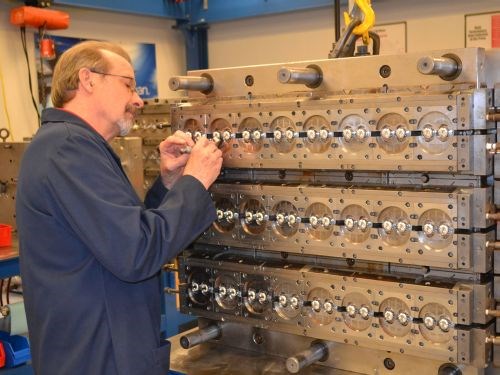Classifying Mold Maintenance Complexity
Molds, and the products they produce, present a variety of challenges for repair technicians, which makes classifying each mold with a degree of difficulty (DOD) essential for efficient and proficient mold repair.

A degree of difficulty (DOD) score should be based on a combination of the following mold characteristics.
- Type. Stack, rotary, two-shot and in-mold assembly are complex mold types that demand precision methods, skills and a higher level of plastics processing knowledge.
- Interrelated tooling stacks. Some molds have dimensional tolerances that are stacked, or added together from a “0” reference corner, to determine a specific position required for exact alignment. This also relates to tooling stacked vertically (A side to B side) to determine a specific preload necessary for clean parting line shutoffs.
- Tolerances. Close-tolerance tooling (0.001 or less) increases the degree of difficulty in all stages of repair. Fitting, handling, measuring and even cleaning methods must be implemented more precisely and carefully to avoid creating flash, galling and other component issues through dings, scratches and burrs.
- Tooling and plates. The more tooling and plates in a mold, the more time-consuming and complex the maintenance becomes, simply by the volume and bench space required.
- Size. If an overhead crane is available, molds that are 4,000 pounds or less are manageable by one man on a bench. The larger the mold, more hands and equipment are required to safely manipulate tooling and plates.
- Material. Glass-filled resins and other abrasive materials can wreak havoc on gate inserts, valve pins, vents and other close fitting tooling. For example, nylon and ABS require tight-fitting tooling and silicone needs a press-fit to keep from flashing.
- Product type. Molds producing parts with hand-trimmed flash do not require the same attention as a medical or pharmaceutical product with exacting dimensional and visual specifications.
- Hot runners. Mold with hot runner systems can be quite difficult to work on due to thermal expansion, required close fits of manifold components, electrical issues, tooling stacks and cleaning residue buildup.
- Age. Multi-cavity molds designed and built 20 years ago typically have each piece of tooling custom-fit to a specific spot or tooling arrangement, which makes replacement, repair and dimensioning extremely difficult. Molds built in this era also did not have the benefit of balanced runners, efficient cooling and hard platings that are common today.
- Classification. Molds are built to an SPI class of 101-105. The latter often built without interlocks, guided bushings, proper cooling, venting or inferior steels, and with no maintenance-friendly features. These molds present challenges when they are expected to run 24/7 with no issues, especially when companies rely on maintenance skills to keep the mold production-ready.
Related Content
-
Hands-on Workshop Teaches Mold Maintenance Process
Intensive workshop teaches the process of mold maintenance to help put an end to the firefighting culture of many toolrooms.
-
Most-Viewed Content of 2022
The most popular MoldMaking Technology content according to analytics reports over the past 12 months.
-
Laser Welding Versus Micro Welding
The latest battle in finely detailed restoration/repair of mold materials.





_300x250 4.png;maxWidth=300;quality=90)






